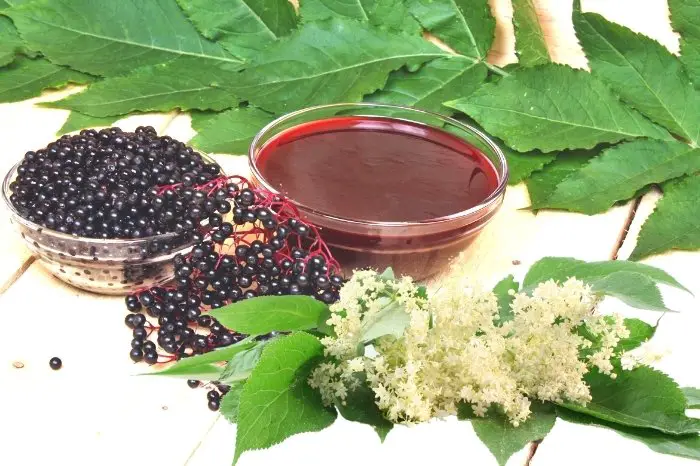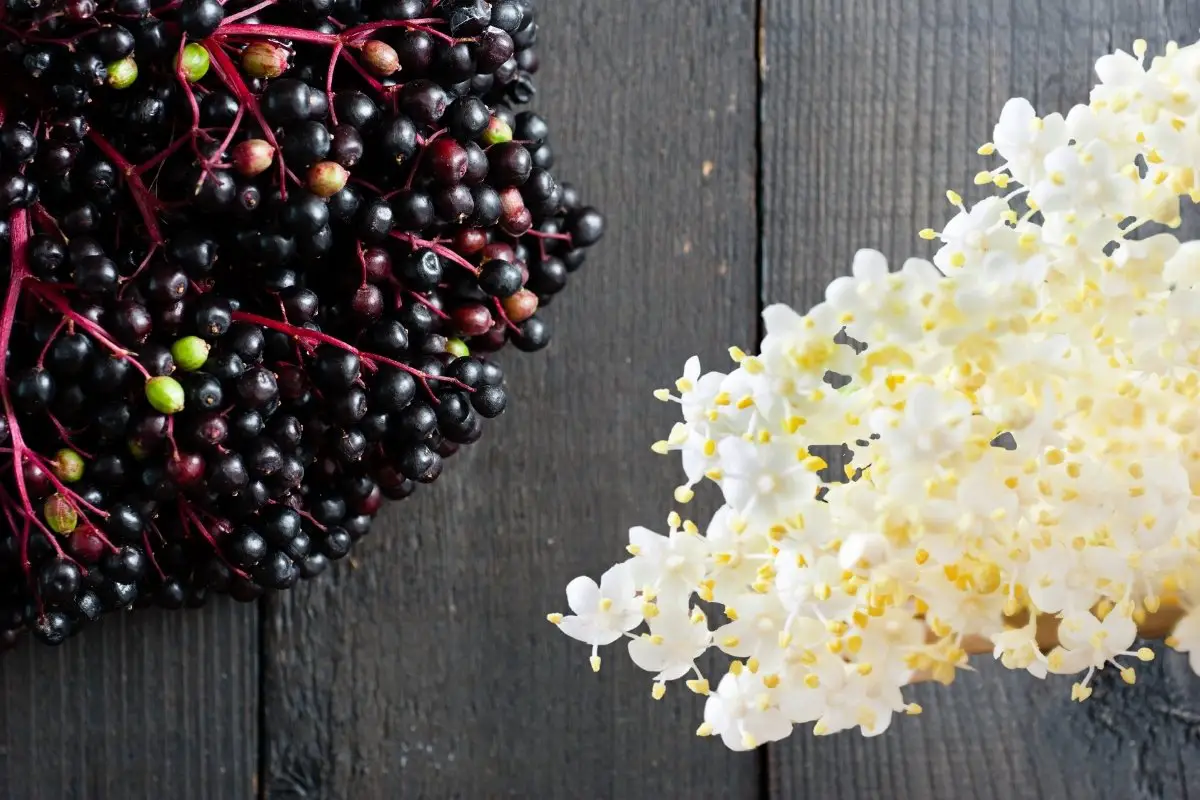Last Updated on October 10, 2024
The elder tree can be confusing – both with its names and its properties. So, let’s go over the elderberry vs elderflower benefits, risks, and preparation recipes. We’ll take a look at what the difference is between these two terms, whether and how you should consume elderberries and elderflowers, and what to watch out for.
Table of Contents
Elderberry Vs Elderflower – What’s The Difference?
In short, the Elderberry tree (Sambucus nigra) – or just Elder tree – is a tree that produces both fruits and flowers, like most other trees. The fruits are called elderberries while the flowers – are elderflowers.
Things become even more confusing when you consider the various other subspecies and related species of the elder tree such as the dwarf elder (Sambucus ebulus) and others. However, here we’ll strictly be talking about the Elder tree and its berries and flowers.

Click Here to Get Info About:
- What Are The 14 Best All Natural Beta Blockers You Can Find In Food?
- What Do You Eat On The Leptin Diet To Lose Weight?
What Are The Elderberry Vs Elderflower Benefits?
The benefits of elderberries and elderflowers are quite similar as they more or less bring the same vitamins and minerals to the table, albeit in different quantities.
Elderberry Benefits
The big plus of elderberries is how chock-full they are of antioxidants. Even that alone earns them the monicker of a superfood but they also have lots of vitamins A, B6, and C, as well as iron, potassium, and plenty of fiber. All this is why they are often used to make wine, jam, juice, syrups, and other beverages.
Removing the seeds of the berries is important, however, as is cooking the berries – for reasons we’ll explain below.
Elderflower Benefits
The minerals and vitamins of elderflowers are similar to those of elderberries but the flower is used in different ways. When it comes to beverages, elderflowers are mostly used for additional flavor. However, where they really shine is as a component in numerous types of medicine – both modern and traditional. In that way, elderflowers can be used for any of the following:
- The common cold
- Constipation
- Diabetes
- Flu (influenza)
- Treating bronchitis by reducing the swelling of the main airways in the lung
- Reducing the swelling of the nasal cavities and sinuses
- Helping with laryngitis by reducing the swelling in the voice box
- Rheumatoid arthritis (RA)
- Clearing sore eyes
- And many others
Elder Flowers Cut & Sifted Organic – 4 Oz,(Starwest Botanicals)
In most cases, however, the elderflowers are used in combination with other ingredients such as cowslip flower, verbena, gentian root, sorrel, and others.
Read more about:
- Are There Shark Cartilage Benefits For Hair Or Is The Recent Craze Just A Fad?
- How Long Does It Take For Squash To Grow? The Shocking Facts!
Elderberry Vs Elderflower Health Risks
Both elderberries and elderflowers pose the same risks – of indigestion, nausea, diarrhea, and vomiting. That’s because many parts of the elder tree are toxic and produce cyanide. This means that consuming the tree’s seeds (that are in the berries), leaves, stems, and roots can lead to a bad digestive experience.
The way to avoid that is to:
- Avoid the toxic parts of the elder tree by always cleaning the berries and flowers of any seeds, leaves, etc.
- Always cook the berries and the flowers to get rid of any cyanide
- While there is no officially prescribed amount of elderberry/flower one should take a day, it’s generally advisable not to take too much
How Can You Prepare Elderberries Or Elderflowers? – Elderberry Vs Elderflower Benefits
Both elderberries and elderflowers should always be cooked and they should never be eaten raw. Even if you know you’ve removed all the seeds of the berry, you should still cook it to make sure that you’re not eating any cyanide. The cooking usually takes the form of just boiling the berry or the flowers in a syrup although recipes can vary. What’s important is that you always cook the elderberry and elderflowers.
In Conclusion, What Are The Elderberry Vs Elderflower Benefits, And Are They Worth It?
The fruits and flowers of the elder tree have lots of health benefits recognized by both modern and traditional medicine. And while you should be careful how you consume them, when taken in the appropriate dose and prepared right, they can be very useful for a whole host of health problems.
FAQ’s

Barbara is an environmental activist and sustainability advocate who loves living green and sustainable. She firmly believes in reducing her carbon footprint and has been making great strides towards achieving this goal. Barbara is a vegan and avid recycler and has been actively involved in community gardens and other green initiatives. She is passionate about spreading awareness about the importance of living in a sustainable and eco-friendly manner. Barbara is always looking for ways to make a difference in her community and beyond. She is a huge advocate for preserving nature and the planet for future generations.


